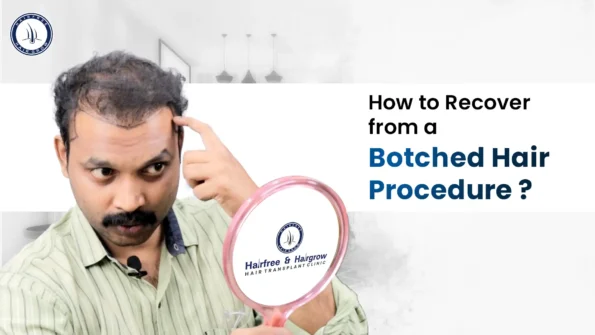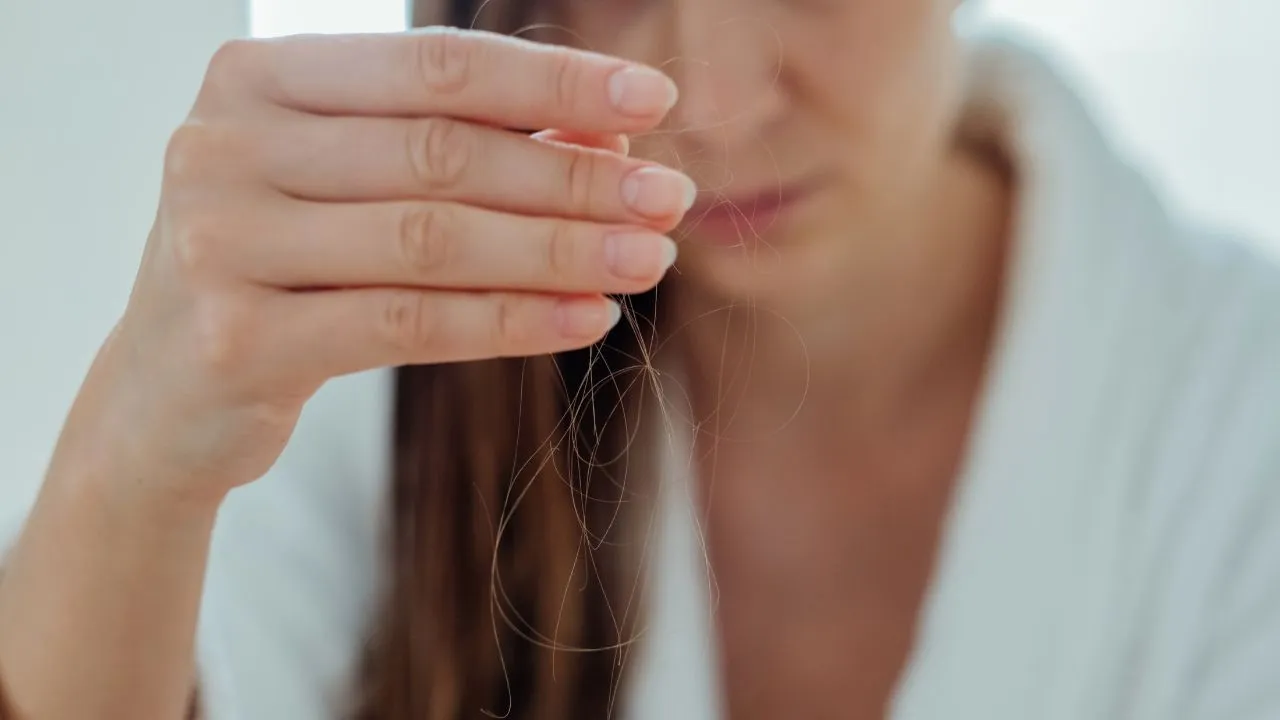Botched hair transplants are the bane and story of many of our compatriots in hair transplant industry. We look at the glamour of beautiful hair and assume that everything is going right, but botched hair transplants are happening. People don’t focus on them. They focus only on success, one knows more about the others from their mistakes.
What is a Botched Hair Transplant and Why Does It Happen?
Bad hair transplants can be categorised as transplants whose results have faded quickly, or the transplant gone wrong or on the right areas. A failed hair transplant can be corrected without much issues, by a trained doctor.
A Botched Transplant on the other hand is of a type that can be reversed, but it costs a lot. The cost is in personal attitude of the victim. How can one trust another procedure, when the first one was horribly Botched? It takes a good motivation and desire to change it with someone who isn’t after greed.
Some Common Causes of a Botched Hair Transplant
There are numerous reasons, but these reasons rarely give the right solutions. The only solution is to first of all reduce any life-threatening risks and then find a good doctor to reverse, if possible, all the damage.
In between, one needs to look at their own motives for the transplant. We are not victim blaming, but to understand one’s small role in a problem is important. There is always a caveat with hair transplant of: Buyer Beware. Some of the things you should be aware and vary of are:
1. Too good to be true deals: If the deal sounds too good to be true, then you should stay away from it. Hair Transplant in 1Rs per graft, or 10 Rs, is just a ploy to enrol many patients. The services are not on par with the Best Hair replacement, others provide.
2. Asking more Grafts: There is a calculation that falls into planning a Hair Transplant. A doctor can be off a few Grafts but if your doctor suggest a more 1000+ Grafts amidst procedure. You shouldn’t say yes. It is a type of rehash, to try and sell you more. More Grafts mean more strain on Body.
Inexperienced or Unqualified Surgeon or Clinic
One of the primary reasons for a botched hair transplant is an inexperienced or unqualified surgeon or clinic. When entrusting your appearance to someone, it’s crucial to ensure they have the necessary expertise and credentials. Always do your research and choose the best hair transplant surgeon or clinic with a proven track record in hair transplantation.
Poor Donor Area or Over-Harvesting of Donor Hair
The success of a hair transplant heavily relies on the quality and quantity of the donor hair. A poorly chosen donor area or over-harvesting of donor hair can lead to an unsatisfactory outcome. A skilled surgeon should assess your donor area carefully and extract hair in a way that maintains a natural look.
Improper Handling or Placement of Hair Grafts
The intricate process of hair transplantation demands precision. Improper handling or placement of hair grafts can result in an unnatural appearance or poor hair growth. This underscores the importance of choosing a clinic with experienced technicians who know how to handle and place grafts effectively.
Unrealistic Expectations or Poor Planning
Misguided expectations and inadequate planning can lead to disappointment. It’s essential to have a clear understanding of what a hair transplant can and cannot achieve. A skilled surgeon will help you set realistic expectations and develop a personalized plan for your transplant.
Medical Issues or Complications
Sometimes, unforeseen medical issues or complications can jeopardize the success of a hair transplant. These can include infections, allergic reactions, or underlying health conditions. It’s vital to disclose your medical history to your surgeon and follow their recommendations to minimize these risks.
There are numerous reasons, but these reasons rarely give the right solutions. The only solution is to first of all reduce any life-threatening risks and then find a good doctor to reverse, if possible, all the damage.
Signs and Symptoms of a Botched Hair Transplant
Scarring or Infection in the Donor or Recipient Area
One of the most common signs of a botched hair transplant is the presence of noticeable scarring in either the donor area (typically the back of the head) or the recipient area (where the transplanted hair is placed). Additionally, if there is an infection in either of these areas, it can be a clear indication of a problem.
Unnatural-Looking Hairline or Density
An improperly executed hair transplant can result in an unnatural hairline that looks out of place or too straight. The hair may be too densely packed in the recipient area, creating an unnatural and “pluggy” appearance, which is a clear sign of a poor-quality transplant.
Poor Growth or Survival of Transplanted Hair
A successful hair transplant should result in the majority of the transplanted hair growing and thriving. If you notice that a significant portion of the transplanted hair does not grow or falls out shortly after the procedure, this is a red flag.
Pain, Swelling, Bleeding, or Numbness
After a hair transplant, it’s normal to experience some level of discomfort, swelling, and minor bleeding in the immediate days following the procedure. However, if these symptoms persist, become severe, or if you experience numbness in the donor or recipient areas, it could indicate complications or a botched transplant.
What to Do If You Have a Botched Hair Transplant and How to Fix It?
Steps to take if you are unhappy with your hair transplant results.
If you’re not happy with the results of your hair transplant and want to know what to do next, here are some steps to consider:
Contact the Clinic Where You Had Your Hair Transplant and Ask for an Explanation or a Refund
The first thing you should do is get in touch with the clinic where you had your hair transplant. Politely ask them to explain the issues you’re facing or discuss the possibility of a refund.
Seek a Second Opinion from a Reputable and Experienced Hair Transplant Surgeon
It’s a good idea to seek a second opinion from a different, experienced hair transplant surgeon. They can assess your situation and provide insights on how to improve your results.
Document Your Case With Photos, Records, and Receipts
Make sure to document your case thoroughly. Take pictures of your current hair situation, keep any medical records, and save receipts from your initial procedure. This will help support your case.
Options for Correcting a Botched Hair Transplant
If you’ve had a hair transplant that didn’t turn out as expected, not to worry! There are several options available to help correct the situation and achieve the desired results. Here are some of the most common corrective measures:
Revision Surgery to Remove, Replace, or Redistribute the Grafts
One of the primary options to correct a botched hair transplant is undergoing revision surgery. This procedure involves the removal, replacement, or redistribution of the grafts. By entrusting your locks to a skilled surgeon, you can rectify any misaligned or improperly placed grafts, ensuring that your new hairline looks natural and symmetrical.
Scar Repair or Revision to Reduce the Visibility of Scars
A common concern after a hair transplant gone wrong is the visibility of scars. Scar repair or revision is a viable solution to minimize these marks, making them less conspicuous. With advanced techniques and technologies, scars can be significantly reduced, leaving you with a smoother, more natural-looking scalp.
Scalp Micropigmentation to Create the Illusion of Density or Cover Scars
If you’re seeking a non-surgical option, scalp micropigmentation (SMP) might be the answer. SMP creates the illusion of hair density by using tiny, intricately placed pigments to mimic the appearance of hair follicles. This technique not only conceals scars but also adds the illusion of a fuller head of hair, giving you the confidence you deserve.
Hair System or Wig to Conceal the Affected Area
For those who prefer an instant solution, a high-quality hair system or wig can be an excellent choice. These hairpieces are designed to seamlessly conceal the affected area, giving you the appearance of a full head of hair. They come in various styles, textures, and colors, allowing you to achieve your desired look effortlessly.
How to Avoid a Botched Hair Transplant in the First Place?
Do your Research and Compare Different Options and Reviews
Before making any decisions, the first and most crucial step is thorough research. Investigate the different hair transplant options available and compare them. Reading reviews from reputable sources can provide valuable insights into the clinics and practitioners you’re considering.
Look for Credentials, Certifications, and Memberships of Professional Associations
Ensuring that the surgeon you choose is qualified and experienced is paramount. Look for credentials, certifications, and memberships in professional associations related to hair transplantation. These certifications demonstrate the surgeon’s commitment to maintaining high standards and up-to-date knowledge.
Ask for Before and After Photos and Testimonials of Previous Patients
One of the most effective ways to gauge a surgeon’s capabilities is by examining before and after photos of their previous patients. These images can give you a clear idea of the kind of results you can expect. Additionally, reading testimonials from former patients can provide valuable insights into the overall experience and satisfaction levels.
Have a Consultation and Discuss Your Goals, Expectations, and Medical History
An in-person consultation is an essential step in the process. During the consultation, you’ll have the opportunity to discuss your goals, expectations, and medical history with the surgeon. This allows the surgeon to provide a customized plan that suits your unique needs and circumstances.
Avoid Low-Cost or High-Volume Clinics that May Compromise on Quality or Safety
While budget-friendly options may seem attractive, it’s crucial to exercise caution. Low-cost or high-volume clinics may compromise on quality and safety to offer discounted prices. Your health and the success of your hair transplant repair should always be a top priority.
Tips for Preparing for and Recovering from Your Hair Transplant
Follow Your Surgeon's Guidance
Before your hair transplant, it’s crucial to follow your surgeon’s pre-operative instructions diligently. These guidelines are designed to ensure the best possible outcome. Key steps include:
Avoid Smoking, Alcohol, and Blood Thinners: Abstain from smoking and alcohol, as they can hinder the healing process. Additionally, refrain from taking blood thinners, which could increase the risk of bleeding during surgery.
Plan Logistics
Preparation is key to a successful hair transplant. Be sure to make the necessary arrangements:
- Transportation: Arrange for transportation to and from the clinic. It’s essential to have a reliable means of getting there and back comfortably.
- Accommodation: Depending on the nature of your procedure, you may need a place to stay. Ensure you have accommodations that suit your needs.
- Time Off Work: Consider taking some time off work to recover comfortably. This will allow you to heal without stress or strain.
Post-Operative Care for Optimal Results
Adhering to Surgeon’s Recommendations.
After your hair transplant surgery, it’s equally important to follow your surgeon’s post-operative instructions for the best results. These recommendations typically include:
- Washing and Moisturizing: Properly wash and moisturize your newly transplanted hair. Your surgeon will guide you on the right products and techniques.
- Protection: Protect your hair from excessive sunlight, wind, and dust. Cover your head when necessary to prevent damage.
- Styling: Your surgeon will advise on when and how to style your new hair. Follow these instructions to ensure the hair grafts settle effectively.
Medications and Supplements
To support healing and prevent complications, it’s vital to take the prescribed medications and supplements:
- Infection Prevention: Antibiotics may be prescribed to prevent infection. It’s essential to complete the full course as directed.
- Inflammation Control: Anti-inflammatory medications can help reduce swelling and discomfort.
- Promoting Healing: Supplements that support hair growth and overall health may also be recommended.
Patience and Realism
Finally, it’s crucial to be patient and realistic about the outcome of your hair transplant. Hair regrowth takes time, and it’s essential to manage your expectations. Remember that results may not be immediately visible, but with time and proper care, your new hair will flourish.
Failed Hair Transplant Photos
Conclusion
Hair Transplant is meant to mask Baldness, not completely eradicate it. The part most important to understand about an,Hair Transplant procedure is that, it is used to mask your flaws, so that you have a natural looking hairline.
Don’t desire more chocolates from the jar, when you know if you take out a lot, then your Hand will be stuck within it. Neither go again and again.
“Hair Transplant is a one time procedure, we at Hair Free Hair Grow, get it right the first time!”
For best and safer hair transplantation choose us we are availbale in Pune, surat, Kolkata, Ahmedabad, Mumbai, Bhopal, Hyderabad & Gurugram choose your nearest Hairfree & Hairgrow branch.
FAQs
How to Fix a Bad Hair Transplant
Fixing a bad hair transplant typically requires consulting with an experienced hair restoration specialist. Options may include hair grafting, revision surgery, or camouflage techniques like micropigmentation. The specific approach depends on the nature and extent of the problem, so seeking a professional’s guidance is crucial for the best results.
How to Avoid a Bad Hair Transplant
To avoid a bad hair transplant, it’s essential to thoroughly research the surgeon and clinic. Look for board-certified, experienced professionals with a proven track record. Examine before-and-after photos, read reviews, and ask for patient referrals. Discuss your expectations, and ensure a personalized treatment plan is in place before proceeding. This diligence helps minimize the risk of a disappointing outcome.
Written By
MBBS, MD
Dr. Pratibha Pradhan is a specialist in hair restoration, providing expert advice on how to recover from a botched hair procedure. With her extensive experience, she helps patients overcome challenges from botched hair transplants and achieve natural, healthy hair growth.
Disclaimer
We’ve made all possible efforts to ensure that the information provided here is accurate, up-to-date and complete, however, it should not be treated as a substitute for professional medical advice, diagnosis or treatment. See Detailed Disclaimers Here.





